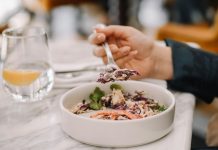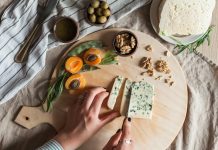
As the holiday season is here, thoughts of pumpkin pies, roasted chestnuts, and turkey dinners fill our dreams and our grocery shopping lists.
But in a new study, researchers suggest that while visions of holiday food may be pleasing to the eyes and tantalizing to the palate, it would be a mistake to conclude that pretty food is healthier than other food.
The research was conducted by a team at the University of Southern California (USC).
In our minds, people associate aesthetic beauty with nature and natural things, which transfers to perceptions that pretty food is a healthy food, but people are often misled by the prettiness of food that’s not very good for you.
Consumers see almost 7,000 food and restaurant ads annually — about 19 per day — and nearly three-quarters of the messages promote fast food. Advertisers employ teams of food stylists and digital tools to render food irresistible.
The images include the artful architecture of a hamburger, a perfect circumference of cheesy pizza or cascading colorful nachos or French fries.
In the study, the team examined how classical aesthetics used in food presentation skews perception.
Features such as symmetry, patterns, order and balance are hallmarks of classical beauty because they mimic nature.
Think spider webs or honeycombs, a starfish or sunsets, butterfly wings or fish scales. Food looks pretty when it copies nature-like features.
Moreover, previous neuroscience research suggests viewing delectable food images activates the brain’s gustatory cortex, essentially simulating the food’s pleasurable taste.
This study goes a step further to determine if pretty aesthetics have other, less obvious effects on food choices, assessing if attractive food appears healthier to consumers and thus influences their decisions.
In a series of experiments involving 4,300 people, the researcher found both men and women reported that pretty food was healthier.
People also considered the “ugly” food less natural and nutritious than the “pretty” food, even though there was no real difference.
People were willing to spend roughly 56% more for the flawless fruit, a boost that was explained by a simultaneous increase in perceived healthiness.
The team says consumers expect the food to be more nutritious, less fatty, and contain fewer calories when it looks pretty based on classical aesthetic principles, and that bias can affect consumer choices and willingness to pay for food.
In daily life, the effect holds true at the grocery store, where people consider natural things — organic food, natural remedies or garden crops — to be healthier than unnatural things such as processed food or synthetic chemicals.
One author of the study is Linda Hagen, an assistant professor of marketing at the USC Marshall School of Business.
The study is published in the Journal of Marketing.
Copyright © 2020 Knowridge Science Report. All rights reserved.



